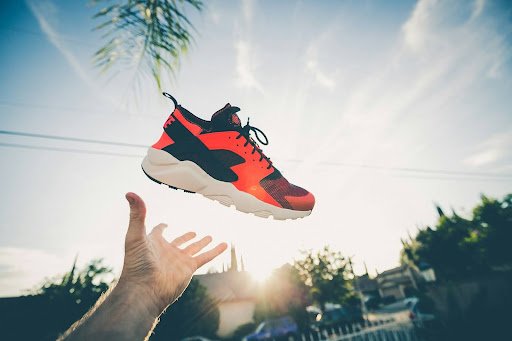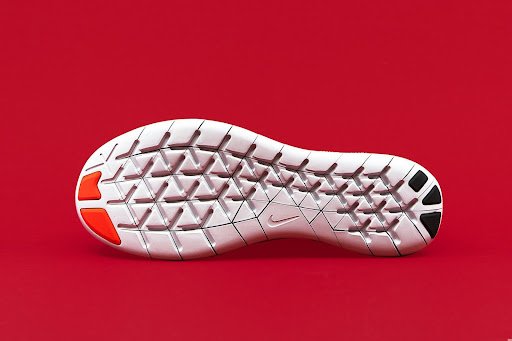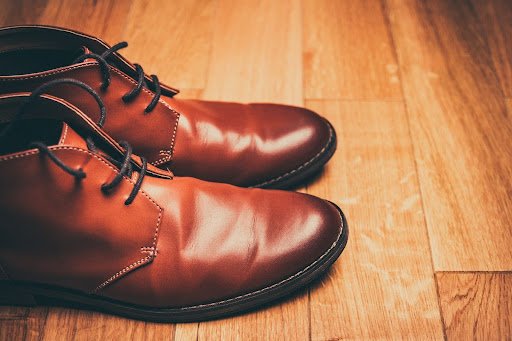Your shoes don’t have to look worn out after a few months. The difference between fresh-looking shoes and deteriorated ones comes down to simple daily habits that take minutes to implement.
Remove Shoes Properly Every Time
You may hear many recommendations, but it is important to follow the ones that are shared by shoe care experts. We got a chance to speak with Jamal from 5asec, a shoe sanitization and polishing expert in Dubai, who shared insightful information to take care of the shoes.
“Never step on the heel to slip off your shoes. This crushes the heel counter and creates permanent deformation. Untie the laces completely and slide your feet out gently. This single change prevents most structural damage that makes shoes look sloppy and worn.”
Keep a shoehorn by your door for dress shoes. It prevents the back from collapsing when you put on shoes. The heel counter maintains its shape, and your shoes look crisp longer.
Clean Shoes Daily With a 30-Second Wipe Down
Wipe your shoes with a clean, dry cloth every evening. This removes surface dirt, salt, and moisture before they penetrate the material. Fresh dirt wipes off easily, but dirt that sits overnight becomes ground in and much harder to remove.
For leather shoes, this prevents the buildup of oils and grime that create a dingy appearance. For canvas shoes, it stops stains from setting permanently. Keep a designated cloth in your entryway so this becomes automatic.
Rotate Your Shoes to Prevent Breakdown
Wearing the same shoes daily destroys them quickly. Your feet produce half a cup of moisture daily, and shoes need 24 hours to dry completely between wears. Wet shoes lose their shape, develop odors, and break down faster than shoes that get proper recovery time.
Own at least two pairs for regular activities and alternate daily. Wear Monday’s shoes on Wednesday, Tuesday’s shoes on Thursday. For expensive dress shoes, use a three-shoe rotation. This extends their life dramatically and keeps them looking professional.
Use Proper Storage to Maintain Shape
Insert shoe trees in leather dress shoes immediately after wearing them. Cedar shoe trees absorb moisture while maintaining the shoe’s natural shape. This prevents creases and deformation that make shoes look old.

For casual shoes, stuff them with newspaper if you don’t want to buy trees for every pair. Store shoes in ventilated areas where air circulates around them. Never use plastic bags or airtight containers, which trap moisture and create mold.
Keep Laces Clean and Replace Them When Worn
Clean laces separately during your weekly shoe cleaning. Dirty laces make even pristine shoes look neglected. Wash fabric laces in the washing machine or replace them entirely if they’re frayed.
Always loosen laces completely before putting shoes on or taking them off. Forcing your foot into tightly laced shoes stretches the material and breaks down the structure. Don’t overtighten laces during wear. Shoes should feel secure but not restrictive.
Perform Weekly Deep Cleaning
Spend five minutes weekly giving shoes thorough attention. Remove laces and clean them separately. Clean the inside of shoes with a damp cloth or antibacterial spray to prevent odor buildup.
Use appropriate cleaners for each material. Leather needs a gentle leather cleaner applied with a soft cloth. Suede requires a specialized brush to lift dirt and restore texture. Canvas shoes can often be machine-washed on gentle cycles. White shoes benefit from a baking soda and water mixture to remove yellowing.
Match Shoes to Weather Conditions
Check the forecast each morning and choose appropriate footwear. Wearing the wrong shoes for conditions guarantees premature damage. Keep emergency protection like waterproofing spray in your car for unexpected weather changes.
Apply waterproofing treatments at the beginning of each season, not after damage occurs. Switch to weather-appropriate shoes for extreme conditions. Your best leather shoes shouldn’t face snow and salt when weather boots are available.
Address Problems Immediately
Inspect shoes daily for debris, stains, or damage. Handle issues immediately while they’re still manageable. Salt stains wipe off easily when fresh, but become permanent if left overnight.
Replace worn components before they affect the entire shoe. New heel tips cost less than a sole replacement. Fresh laces are cheaper than new shoes. Small repairs prevent major problems.
Store Shoes in Designated Spaces
Create specific storage areas where shoes can maintain their shape. Don’t pile shoes together or stuff them in cramped spaces. Each pair needs room to breathe and maintain its form.

Organize your shoes so you can easily rotate them. When good shoes are buried behind worn pairs, you’ll default to wearing the same shoes repeatedly. Easy access encourages proper rotation.
Maintain a Consistent Care Schedule
Establish routines that become automatic. Daily wipe-downs, proper removal, and immediate storage should require no conscious thought. Weekly deep cleaning prevents buildup that requires intensive restoration.
Focus on consistency over perfection. Doing these tasks most days delivers better results than perfect execution once a month. Small, regular attention prevents major problems and expensive replacements.
